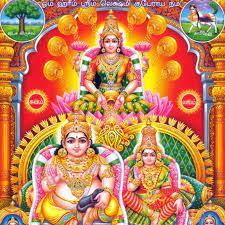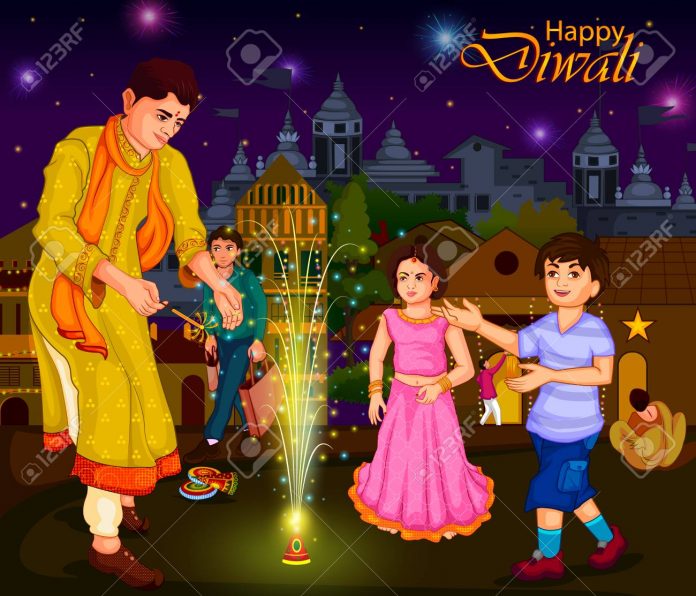Deepavali or Diwali is celebrated in different ways in various parts of India according to their customs and belief. People clean their homes and work places, renovating their homes, and decorating their homes and workplaces with lamps and with rangolis.

During Diwali, people wear new clothes, illuminate the interior and exterior of their homes with lamps, performing pooja for Lakshmi, the goddess of prosperity and wealth, burn fireworks, and partake in family feasts, sharing of sweets and gifts. Diwali is also a major cultural event for the Hindu.
GANGA SNANAM:
South Indians, take oil bath on the day of Diwali before Sunrise, “Ganga Snanam”, as it is believed that, holy river Ganga matha, makes her gracious presence in every drop of water used for holy bath on this auspicious day of Diwali.
After taking bath, new clothes are worn and youngsters seek the blessings of elders of the family and share sweets and snacks to the friends and relatives.

The five-day long festival originated in the Bharatha Desam (India) and is mentioned in early Sanskrit texts.
Diwali is usually celebrated twenty days after Vijayadasami during Dussehra festival, with marking the first day of the festival when celebrants prepare by cleaning their homes and making decorations on the floor. The second day is Naraka Chaturdashi. The third day is the day of Lakshmi pooja, and the darkest night of the traditional month. In some parts of India, the day after Lakshmi Puja is marked with the Govardhan Puja and Balipratipada (Padwa). Some Hindu communities mark the last day as “Bhai dhoo” or the regional equivalent, which is dedicated to the bond between sister and brother, while other Hindu craftsmen communities mark this day as Vishwakarma pooja and observe it by performing maintenance in their work spaces and offering prayers.

RELIGIOUS SIGNIFICANCE:
The religious significance of Diwali varies regionally within India.
RAMAYANAM: One tradition links the festival to legends in the Hindu epic Ramayanam, where Diwali is the day Rama, Sita, Lakshmana and Hanuman reached Ayodhya after a period of 14 years in exile after Rama’s army of good defeated demon king Ravana and his army .

DWAPARA YUGA: As per another popular tradition, in the Dwapara Yuga period, Krishna, an incarnation of MahaVishnu, killed the demon Narakasura, who was evil king of Pragjyotishapura, near present-day Assam and released 16000 girls held captive by Narakasura. Diwali was celebrated as a significance of triumph of good over evil after Krishna’s Victory over Narakasura. The day before Diwali is remembered as Naraka Chaturdasi, the day on which Narakasura was killed by Krishna.

CELEBRATION IN VARIOUS PARTS OF INDIA
Hindus of eastern India associate the festival with the goddess Kali, who symbolises the victory of good over evil. Hindus from the Braj region in northern India, parts of Assam, as well as southern Tamil and Telugu communities view Diwali as the day the god Krishna overcame and destroyed the evil demon king Narakasura, in yet another symbolic victory of knowledge and good over ignorance and evil.
Trade and merchant families and others also offer prayers to Saraswathi, who embodies music, literature and learning and Kubera who symbolises book-keeping, treasury and wealth management. In western states such as Gujarat, and certain northern Hindu communities of India, the festival of Diwali signifies the start of a new year.

Mythical tales shared on Diwali vary widely depending on region and even within Hindu tradition, yet all share a common focus on righteousness, self-inquiry and the importance of knowledge, the path of overcoming the “darkness of ignorance”.
These myths are just examples of the Hindu belief that good ultimately triumphs over evil…..








